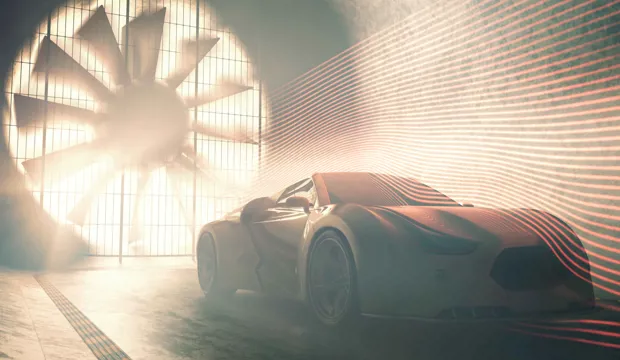
Energy transfer
Explore energy transfer and energy efficiency using wind turbines
The concept of energy transfer is brought to life in this activity, showing students how the kinetic energy of wind can be harnessed to power homes and businesses. Windmills and wind turbines are based upon the principle of trying to create a shape where air flow causes the maximum possible change in kinetic energy. The hands-on nature of this task, which involves modifying a basic wind turbine to generate electricity, will appeal to students' curiosity and creativity.
This is one of a set of resources developed to support the teaching of the secondary national curriculum, particularly KS3. It has been designed to support the delivery of key topics within science and design and technology (DT).
Tools/resources needed
Electric fans
Turbines at 5 angles (Most blades can be bought as kits, or partial kits can be purchased where students can build their own blades)
- Wires
- Rulers
- Crocodile clips
- Voltmeter
- Ammeter or multimeter
- Model Generator
Activity: Explore energy transfer and energy efficiency using wind turbines
This activity gives students the opportunity to explore how the energy efficiency of turbines is directly affected by their design (shape and angle, which can be determined through the study of aerodynamics).
Download our activity overview and worksheet for a detailed lesson plan for teaching energy transfer and energy efficiency using wind turbines.
The engineering context
This activity provides a real-world context, introducing students to the principles of aerodynamics and energy efficiency in engineering design. As they explore how the shape and angle of turbine blades affect energy conversion, they're learning vital principles relevant to fields such as renewable energy engineering, mechanical engineering, and environmental engineering.
Suggested learning outcomes
By the end of this activity, students should be able to describe how energy is transferred using turbines and explain the importance of efficiency in devices. They will have designed an investigation to determine the relationship between efficiency and turbine design (shape and angle). Students will also have developed critical thinking skills as they control variables and analyse results to improve accuracy. In addition, they'll gain a broader understanding of renewable energy resources, highlighting the need to develop alternative ways to generate electricity.
Download our activity sheet and other teaching resources
The activity sheet includes teachers’ notes, useful web links, and links (where appropriate) to the national curriculum in each of the four devolved nations; England, Northern Ireland, Scotland and Wales.
All activity sheets and supporting resources are free to download, and all the documents are fully editable, so you can tailor them to your students’ and your schools’ needs.
You can download our step-by-step instructions below as both a classroom lesson plan and a PowerPoint presentation.
Please do share your highlights with us @IETeducation.





